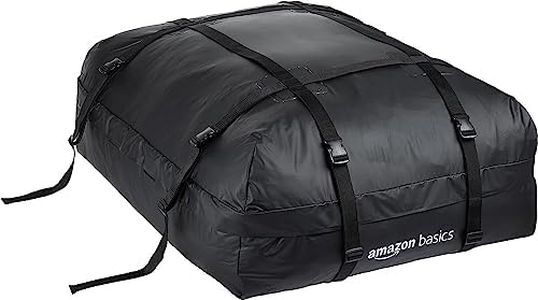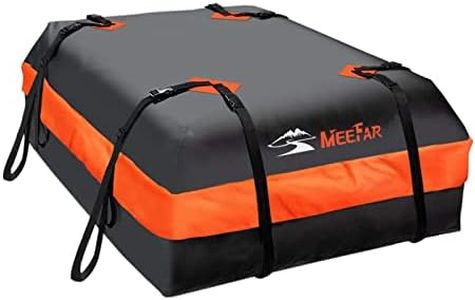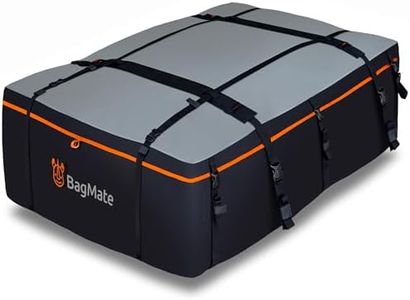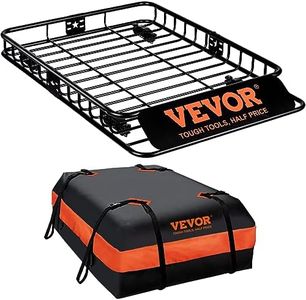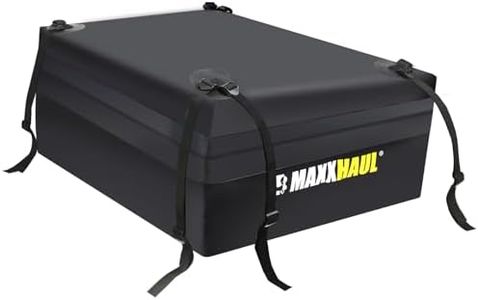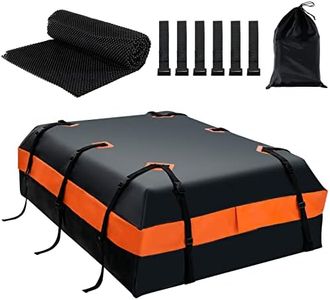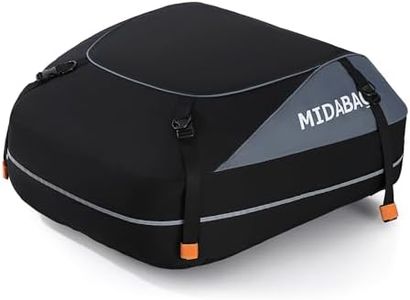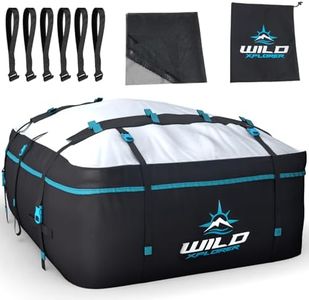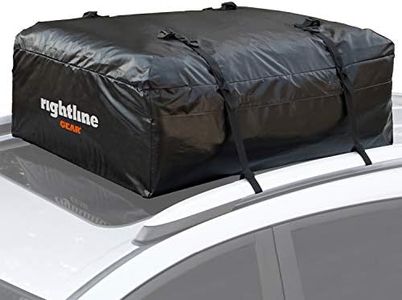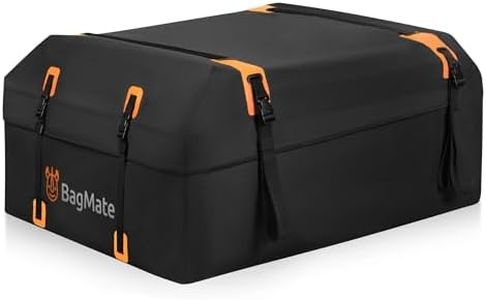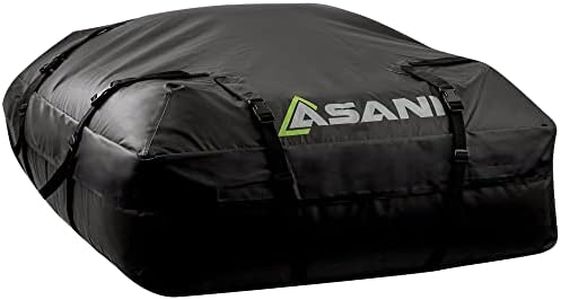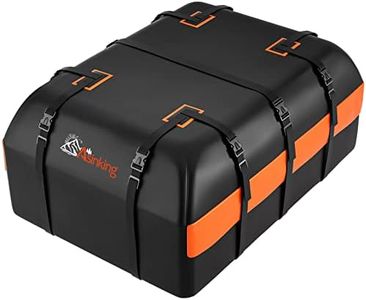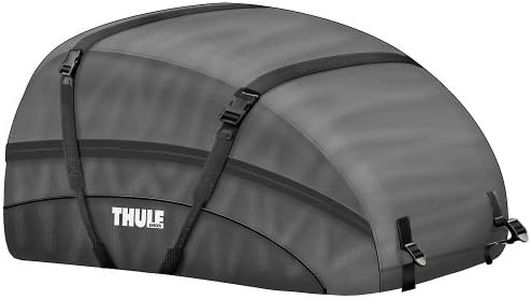We Use CookiesWe use cookies to enhance the security, performance,
functionality and for analytical and promotional activities. By continuing to browse this site you
are agreeing to our privacy policy
10 Best Car Roof Bag
From leading brands and best sellers available on the web.Buying Guide for the Best Car Roof Bag
Choosing the right car roof bag can make travel easier and more comfortable by giving you extra storage space without needing a trailer or roof box. The key is to find a bag that fits your needs, vehicle, and typical travel usage. Consider how much you usually pack, the type of trips you take, and your vehicle’s roof setup. Taking the time to understand the main features will help you avoid leaks, protect your gear, and ensure a hassle-free installation and removal process.CapacityCapacity refers to how much storage space the bag provides, often measured in liters or cubic feet. This is important because it tells you how much gear you’ll be able to carry. Smaller bags (under 12 cubic feet) are suited for solo travelers or short trips, holding a few small suitcases or duffels. Medium bags (12-16 cubic feet) work for small families or longer adventures. Large bags (above 16 cubic feet) are good for groups or extended trips needing lots of luggage space. Consider how many people are traveling, how much you typically pack, and remember that larger bags may affect fuel efficiency or the way your car drives.
WaterproofingWaterproofing tells you how well the bag can keep out rain, snow, and dust. Some bags are water-resistant (light protection, seams may leak), while others are fully waterproof (welded/sealed seams and waterproof zippers). For occasional fair-weather use, basic resistance might be enough, but for frequent travel, unpredictable weather, or protecting electronics/clothes, full waterproofing is worth the investment.
Attachment SystemThis describes how the bag is secured to your car. Roof bags often use straps that attach to roof rails, crossbars, or door frames. Some are only compatible with vehicles with racks, while others work for bare-roof cars too. For ease of use and safety, choose a method that matches your car roof design and is simple for you to manage. If you don’t have a rack, look for models with door hooks or non-slip pads designed for bare roofs.
Material DurabilityThe durability of the bag depends on the type and thickness of the materials used, usually heavy-duty PVC or coated nylon. Stronger fabrics protect your gear longer, resist abrasions from road debris, and last through repeated trips. Thicker bags are heavier but tougher, while lighter materials are easier to handle but may wear out faster. Choose more rugged material if you travel frequently or in harsh conditions; lighter construction is fine for rare, gentle use.
Ease of AccessAccess refers to how easily you can open and close the bag to load or unload your items, usually through zippers on the sides or top. Some bags are designed with wide openings or dual zippers for convenience. If you need to get things in and out on the go (like camping gear or snacks), prioritize wide openings and smooth, weather-protected zippers. For trips where you pack once and empty at your destination, this is less critical.
AerodynamicsAerodynamics is about how well the bag’s shape cuts through the air as you drive. Sleeker, lower-profile bags reduce wind resistance, which can help with gas mileage and reduce wind noise. Bulkier shapes hold more but catch more air. If you drive long distances on highways, a streamlined shape is preferable. If you mostly need maximum space for short trips, shape is less important.
Foldability and StorageWhen the roof bag isn’t in use, you’ll want to store it somewhere. Some bags fold down very small, while more rigid or thick versions take more space. If your storage room at home is limited, consider how compactly the bag can be tucked away when not needed.
